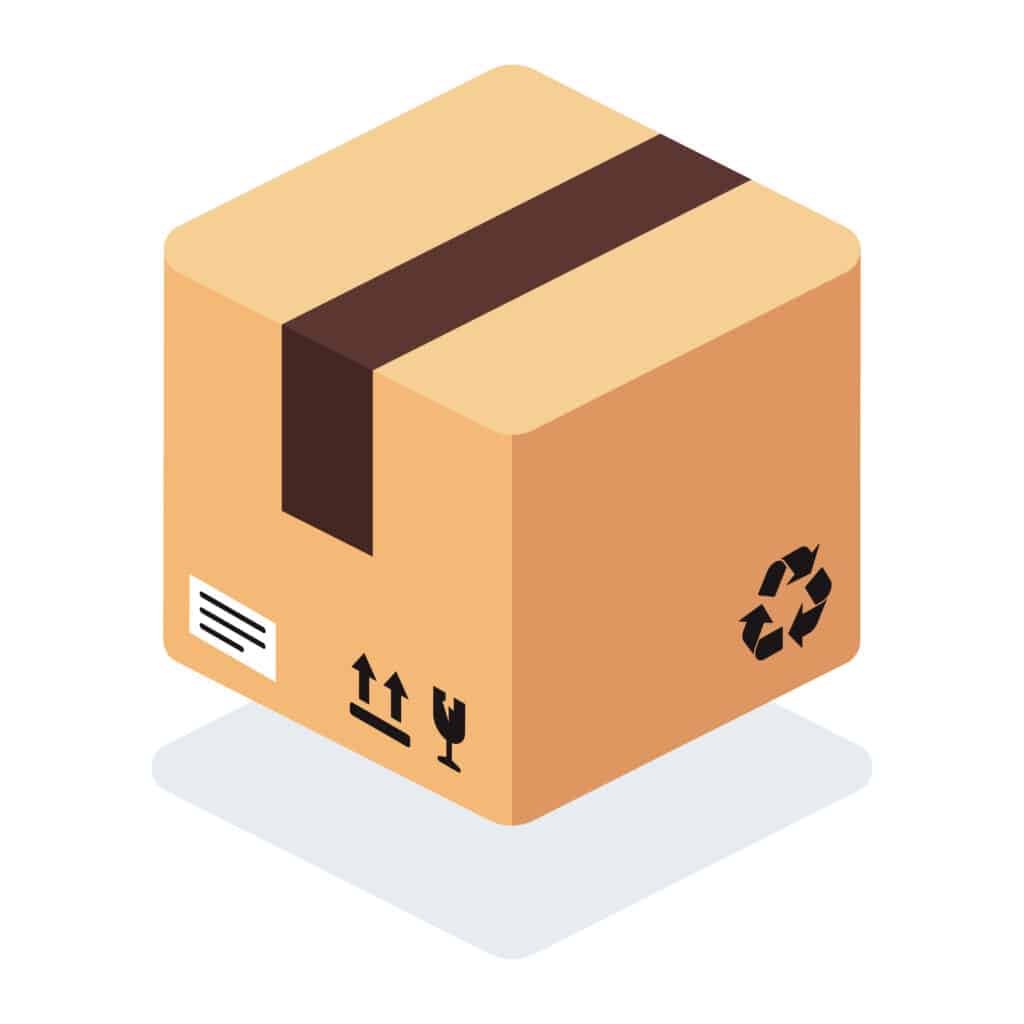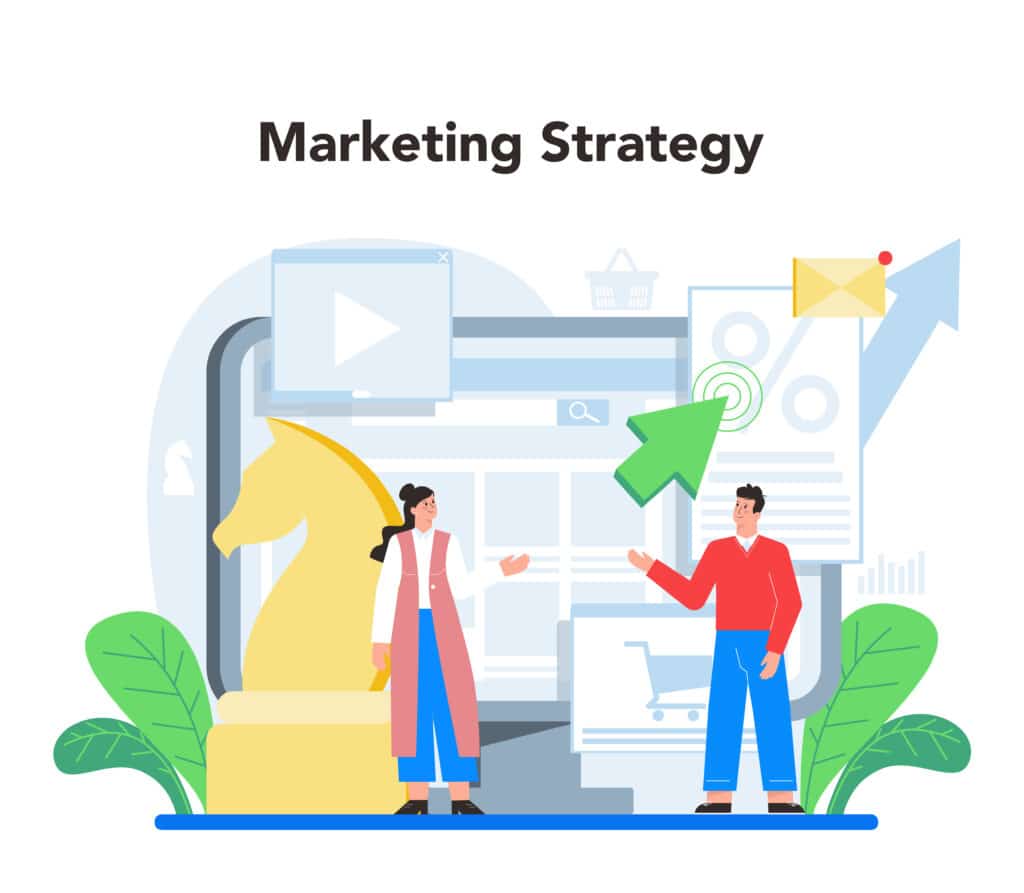Subscription-based business models have reshaped how products and services are offered and consumed. More than 38% of people will have benefited from subscription business ideas in 2020 alone.
Subscription businesses offer products or services on a recurring basis, usually monthly or annually. This setup allows ventures to have a steady revenue stream and customers to enjoy a continuous flow of benefits without the hassle of repeated transactions.
This blog will explore the benefits of subscription-based business ideas and different subscription-based business ideas that tap into this trend, showcasing the innovative ways entrepreneurs are capitalizing on this mode.

Subscription businesses offer a range of benefits for both companies and consumers, creating a win-win scenario. Let’s delve into the advantages:
Benefits for Businesses
Steady Revenue Stream:
One of the most significant advantages for businesses is the establishment of a predictable and steady revenue stream. Monthly or annual subscriptions provide a consistent income, making it easier for companies to plan and allocate resources.
Customer Retention:
Subscription models promote long-term relationships with customers. Once someone subscribes, there’s an ongoing commitment. This builds a loyal customer base over time.
Reduces Customer Acquisition Costs:
Acquiring new customers can be expensive. Subscription models often lead to lower customer acquisition costs since the focus is on retaining existing customers rather than constantly seeking new ones.
Data Insights:
Subscriptions generate valuable data about customer preferences and behaviors. Businesses can use this data to refine their products or services, personalize offerings, and enhance the overall customer experience.
How can it Benefit your Consumers?
Convenience:
Subscriptions offer convenience by automating the delivery of products or services. Whether it’s a monthly subscription box of goodies or access to digital subscription plans, consumers enjoy the ease of receiving what they need without the hassle of repeated transactions.
Cost Savings:
Many subscription models provide cost savings compared to one-time purchases. Bundled services or discounted rates for subscribers make the overall cost more affordable for consumers.
Personalization:
Businesses often create subscription offerings based on customer preferences and behaviors. This personalization enhances the customer experience by providing individuals with products or content that align with their interests.
Access to Exclusive Content or Products:
Subscribers often gain access to exclusive content, early releases, or special edition products. This creates a sense of exclusivity and additional value for customers.
Predictable Budgeting:
For consumers, subscription models help create better budgeting. With a fixed monthly or annual fee, individuals can plan their expenses more effectively, knowing what to expect without surprise costs.
Subscription businesses create a symbiotic relationship where businesses benefit from steady revenue and customer loyalty while consumers enjoy convenience, cost savings, and personalized experiences. This model has proven to be adaptable across various industries, contributing to its widespread popularity.
Subscription businesses come in various shapes and sizes, catering to diverse interests and needs. Here are some different types:
Subscription Boxes

These are subscription-based online businesses that have become a popular and diverse market, offering a wide range of curated products to subscribers on a regular basis. From beauty products to snacks and books, subscription boxes offer a delightful surprise each time. Here are some different types of subscription boxes:
Beauty and Makeup Boxes: These subscription boxes typically contain various beauty and skincare products, including makeup samples, skincare items, and beauty accessories. With the increasing focus on self-care and beauty routines, a monthly delivery of curated beauty and skincare products provides consumers with the latest trends and high-quality products to enhance their well-being.
Examples include Birchbox and BoxyCharm.
Snack Boxes: As people seek unique and convenient snack options, a snack subscription box introduces subscribers to various snacks from around the world, catering to diverse tastes and dietary preferences.
Examples include Love With Food and MunchPak.
Book Subscription Boxes: Book subscription services send subscribers a new book each month, often accompanied by additional items related to the book, such as bookmarks, author notes, or themed merchandise.
Examples include Used Books Monthly and Book of the Month Club.
Fitness and Wellness Boxes: The growing emphasis on health and well-being makes fitness and wellness subscription boxes highly relevant. Subscribers receive tools to support their fitness journey and prioritize self-care. These boxes contain products, including fitness gear, supplements, healthy snacks, and self-care items.
Examples include Musclebox & Miss Muscle Box, and The Lift Box.
Fashion and Accessories Boxes: As more and more people seek personalized and curated fashion experiences, a subscription box delivering clothing and accessories tailored to individual styles ensures variety and keeps subscribers in tune with fashion trends. Here, the subscribers receive a curated selection of fashion items, including clothing, jewelry, and accessories.
Examples include Fabletics and FabFitFun.
Art and Craft Boxes: The demand for creative outlets has increased. An art and craft subscription box provides individuals with art supplies, craft kits, and DIY projects.
Examples include Craftiosity and the Cosy Craft Club subscription box.
Pet Subscription Boxes: Pet owners can subscribe to boxes containing treats, toys, and accessories for their pets.
Examples include PupJoy Box and Meowbox.
Kids and Family Boxes: Parents seek educational and entertaining options for their children. A kids and family subscription box delivers age-appropriate activities and toys, fostering learning and family bonding. These subscription services often include toys, educational activities, and books.
Examples include KiwiCo and Little Passports.
Tech and Gadgets Boxes: A tech subscription box keeps subscribers up-to-date with innovative products, making technology more accessible.
Examples include BreoBox and the Gadget Club.
Magazine and Newspaper Subscriptions: Traditional media has embraced the subscription model, offering digital or print publications on a regular basis.
Examples include MySubs and Manorama Subscriptions.
Plant and Gardening Boxes: With the rise of indoor gardening and plant parenting, a plant and gardening subscription box provides enthusiasts with the tools and knowledge to cultivate their green spaces. These subscription boxes may provide plants, seeds, gardening tools, and tips for nurturing indoor or outdoor gardens.
Examples include Seed Bank Box and Mud & Bloom.
Meal Kits: Some subscription services deliver pre-portioned ingredients and recipes to subscribers, making home cooking convenient and enjoyable.
Examples include Blue Apron and Hello Fresh.
Coffee Subscription Boxes: These subscriptions deliver a curated selection of coffee beans or grounds, along with additional items to enhance the coffee experience.
Examples include Blue Bottle Coffee and BeanBox.
Toiletries Subscription Box: These subscriptions cater to various hygiene needs and often include shampoo, conditioner, body wash, toothpaste,tissues, and more.
Example includes Amazon Subscriptions.
Meat Subscription Box: Meat subscription boxes ensure the delivery of high-quality, fresh, and often locally sourced meats directly to consumers’ doorsteps.
Examples include Butcher Box and Greensbury Market.
Milk Subscription: A milk subscription is a service that allows customers to receive regular deliveries of fresh milk to their doorstep on a scheduled basis.
Examples include BBDaily and MilkBasket.
Streaming Services

These subscription service businesses provide subscribers with continuous access to a vast library of content, be it movies, music, or TV shows, for a monthly fee. Here are some major streaming service ideas that can be used by subscription businesses.
Movie Streaming Service: A platform that offers a vast library of movies, including classics, blockbusters, and independent films, accessible for a monthly fee.
Examples include Netflix and Hulu.
TV Show Streaming Service: Provides a wide range of TV series, from current releases to timeless classics.
Examples include Disney+ and Amazon Prime Video.
Music Streaming Service: A subscription-based music streaming platform offers access to a vast library of songs and playlists, with options for offline listening.
Examples include Spotify and Apple Music.
Live TV Streaming Service: A service that streams live television channels and provides an alternative to traditional cable or satellite TV.
Examples include Sling TV and YouTube TV.
Anime Streaming Service: Designed specifically for anime fans, these platforms offer a comprehensive library of anime series and movies.
Examples include Crunchyroll and Hulu.
Educational Streaming Service: A platform that offers educational content, including online courses, tutorials, and documentaries.
Examples include Udemy and Kanopy.
Gaming Streaming Service: Provides access to a library of video games that can be streamed directly, eliminating the need for high-end gaming hardware.
Examples include Twitch and YouTube gaming.
Sports Streaming Service: A dedicated platform for streaming live sports events, including games, matches, and exclusive sports content.
An example includes Fubo.
Health and Fitness Streaming Service: Offers workout classes, yoga sessions, and wellness programs that subscribers can stream from the comfort of their homes.
Examples include VPlayed and Zype.
Podcast Streaming Service: A platform that delivers a variety of podcasts to subscribers, allowing them to discover and listen to content seamlessly.
Examples include Google Podcasts and Apple Podcasts.
News and Current Affairs Streaming Service: Focused on delivering live news broadcasts, analysis, and documentaries on current events.
Examples include BBC iPlayer and CNN+.
Software as a Service (SaaS)

Software as a Service (SaaS) has revolutionized the way businesses and individuals access and use software applications. SaaS subscription models provide users with on-demand access to software hosted in the cloud, eliminating the need for traditional installations and maintenance. Here are some major SaaS ideas for subscription businesses:
Project Management Software: These are cloud-based project management tools that facilitate collaboration, task management, and progress tracking for teams.
Examples include Asana and Jira.
Customer Relationship Management (CRM) Software: This is a SaaS solution that helps businesses manage interactions with their customers, streamline sales processes, and enhance customer relationships.
Examples include HubSpot CRM and Zoho CRM.
Accounting and Finance Software: Cloud-based accounting tools that automate financial processes, invoicing, and expense tracking for businesses of all sizes.
Examples include QuickBooks Online and Xero.
Human Resources Management Software: SaaS platforms that streamline HR processes, including employee onboarding, payroll, time tracking, and performance management.
Examples include Gusto and Workday.
Collaboration and Communication Tools: Cloud-based communication and collaboration platforms that facilitate real-time communication, file sharing, and video conferencing.
Examples include Slack and Google Workspace.
Customer Support and Help Desk Software: SaaS solutions that assist businesses in managing customer inquiries, support tickets, and service requests efficiently.
Examples include Zendesk and Intercom.
E-commerce Platforms: SaaS platforms that enable businesses to set up and manage online stores, process transactions, and track inventory.
Examples include Shopify and WooCommerce.
Marketing Automation Software: Cloud-based tools that automate marketing processes, including email campaigns, lead nurturing, and analytics.
Examples include HubSpot Marketing Hub and Mailchimp.
Learning Management Systems (LMS): SaaS platforms for creating, delivering, and tracking online courses and training programs.
Examples include Canvas and Teachable.
Cybersecurity Solutions: SaaS-based security tools that protect against cyber threats, including antivirus, firewall, and threat detection.
Examples include McAfee and CrowdStrike.
Data Analytics and Business Intelligence: SaaS solutions that provide data analysis, visualization, and reporting tools to help businesses make informed decisions.
Examples include Tableau and Google Analytics.
Document Management and Collaboration: SaaS platforms that facilitate document creation, storage, and collaboration among team members.
Examples include Dropbox Business and Microsoft SharePoint.
Other Digital Goods Subscriptions

While streaming services continue to dominate digital subscription businesses, there’s a rise in digital subscriptions beyond content and software. Businesses are capitalizing on the digital shift in various industries.
E-books and Audiobooks: These services provide digital subscriptions for unlimited access to a vast library of e-books and audiobooks.
Examples include Kindle and Scribd.
Digital Comics and Graphic Novels: These platforms provide digital subscriptions for reading a vast collection of comics and graphic novels.
Examples include ComiXology and Marvel Unlimited.
Virtual Events and Conferences: With the rise of virtual events, some platforms offer digital subscriptions to access a series of online conferences, webinars, or virtual trade shows.
Examples include Zoom meetings and Google Meet.
The subscription business model continues to evolve, influenced by changing consumer preferences, technological advancements, and market dynamics. Here are some current trends shaping the subscription business landscape:
Personalization and Customization: Consumers are increasingly seeking personalized experiences. Subscription businesses are responding by offering customizable options, allowing customers to get their subscriptions based on individual preferences, needs, and usage patterns.
Hybrid Models: Some subscription businesses are adopting hybrid models that combine elements of both subscription and traditional retail. This approach provides flexibility for consumers who may want to try products before committing to a subscription.
Sustainability and Eco-Friendly Initiatives: There’s a growing demand for sustainable and eco-friendly products and services. Subscription businesses are incorporating environmentally conscious practices, such as using eco-friendly packaging, sourcing responsibly, and promoting sustainable consumption.
Membership Programs: Beyond traditional subscriptions, businesses are creating membership programs that offer exclusive perks, early access to products, and members-only events. This promotes a sense of community and loyalty among subscribers.
Subscription Marketplaces: Platforms that collect multiple subscription services are gaining popularity. These marketplaces allow consumers to manage and explore a variety of subscriptions in one place, offering convenience and a centralized experience.
Tiered Pricing Structures: Subscription businesses are adopting tiered pricing to serve different customer segments. This may include basic, premium, and deluxe subscription tiers, each offering varying levels of access, benefits, and features.
Renting and Leasing Models: Some industries are moving towards subscription models that involve renting or leasing rather than outright purchasing. This trend is prominent in sectors like fashion (renting clothing), technology (leasing gadgets), and even furniture.
B2B Subscription Services: The subscription model is expanding beyond consumer-focused businesses to Business-to-Business (B2B) services. Companies are offering subscription-based solutions for software, tools, and services tailored to the needs of businesses.
Artificial Intelligence and Personalized Recommendations: Subscription businesses are using AI to analyze customer data and provide personalized recommendations. This enhances the customer experience by offering products or content that align with individual preferences.
Choosing the right niche is a crucial step in launching a successful subscription business. Here’s a guide on how to identify a niche that aligns with your passion and meets the needs of your target audience:
Identify your interests and passions:
Start by exploring your own interests and passions. What topics, products, or services do you genuinely enjoy or have a deep understanding of? Your enthusiasm will drive the success of your subscription business.
Analyze your skills and expertise:
Consider your skills and expertise. What are you knowledgeable about or skilled at? Your expertise can set you apart in the chosen niche and build trust with your subscribers.
Research market trends:
Conduct thorough market research to identify trends and gaps in the market. Look for areas where demand is high, but competition is relatively low. Analyze consumer behavior and preferences to understand potential opportunities.
Assess target audience needs:
Understand the needs and pain points of your target audience. What problems can your subscription business solve for them? Addressing specific needs ensures that your offering provides value for potential subscribers.
Validate demand:
Before fully committing to a niche, validate the demand for your subscription idea. Conduct surveys, polls, or test the market with a small-scale launch to measure interest. This helps you avoid investing time and resources in a niche with limited demand.
Evaluate profitability:
Consider the financial viability of your chosen niche. Evaluate the potential profitability of your subscription business by estimating costs, pricing strategies, and subscription volume. Ensure that your business can sustain itself and grow over time.
Stay flexible and adaptable:
Be open to adjusting your niche based on feedback and market dynamics. Stay flexible and adaptable as you gather more information and learn from the initial phases of your subscription business.
Leverage your network:
Reach out to your network for insights. Friends, family, and colleagues can provide valuable feedback and perspectives on your subscription idea. They may also offer suggestions or identify potential challenges you might have overlooked.
Test and iterate:
Launch a test version of your subscription business to gather real-world feedback. Use this information to iterate and improve your offering based on the actual experiences and preferences of your subscribers.

Social media marketing:
Leverage social media platforms to create engaging content, share updates, and connect with your audience. Utilize targeted advertising on platforms like Facebook, Instagram, and Twitter to reach potential subscribers.
Content marketing:
Create valuable and relevant content that showcases the benefits of your subscription service. This could include blog posts, videos, or infographics. Use content to position your business as an authority in your niche.
Influencer partnerships:
Collaborate with influencers in your industry or niche. Influencers can reach a larger audience and provide authentic reviews or testimonials, increasing trust and credibility for your subscription business.
Referral programs:
Implement a referral program where existing subscribers are rewarded for referring new customers. This not only encourages word-of-mouth marketing but also encourages your current customer base to actively promote your subscription service.
Limited-time promotions:
Create a sense of urgency by offering limited-time promotions or exclusive discounts. This can attract new subscribers.
Email marketing:
Build an email list and engage with subscribers through newsletters. Use email campaigns to share updates, exclusive offers, and personalized content to keep subscribers informed and interested.
Free trials or samples:
Offer free trials or samples to potential subscribers. This allows them to experience your service firsthand, increasing the likelihood of conversion. Be transparent about the trial period and the value they will receive.
Collaborations and cross-promotions:
Collaborate with other businesses or influencers for cross-promotions. This can expand your reach and introduce your subscription service to new audiences.
Customer reviews and testimonials:
Encourage satisfied customers to leave reviews and testimonials. Positive feedback builds credibility and trust, influencing potential subscribers to choose your service.
Loyalty programs:
Implement a loyalty program to reward and retain existing subscribers. This could include exclusive content, discounts on additional subscriptions, or early access to new features.
Interactive and engaging campaigns:
Create interactive and engaging campaigns, such as contests, quizzes, or polls, to involve your audience. This not only boosts brand awareness but also encourages participation and interaction.
Customer engagement on social media:
Actively engage with your audience on social media. Respond to comments, ask questions, and create a community around your subscription service. User-generated content can be a powerful tool for promotion.
Search Engine Optimization (SEO):
Optimize your website and content for search engines to improve visibility. This includes using relevant keywords, creating high-quality content, and obtaining backlinks from reputable sources.
Participation in events and exhibitions:
Participate in relevant industry events or exhibitions. This provides an opportunity to showcase your subscription service, network with potential customers, and create a memorable in-person presence.
Targeted Ad Campaigns:
Use targeted advertising campaigns to reach specific audiences or interests. Platforms like Google Ads allow you to create your ads for a highly segmented audience, increasing the chances of conversion.
Conclusion
In business innovation, subscription models stand out as a strategy of convenience and personalization. From curated boxes that surprise and delight to digital services that provide great solutions, subscription businesses have transformed how we access and enjoy products and experiences.
As we explored a diverse array of subscription business ideas, it’s evident that the possibilities are as varied as the interests of consumers. The subscription business platform is an ever-evolving playground for creativity and entrepreneurship, which allows you to find your niche and match what people want right now.



